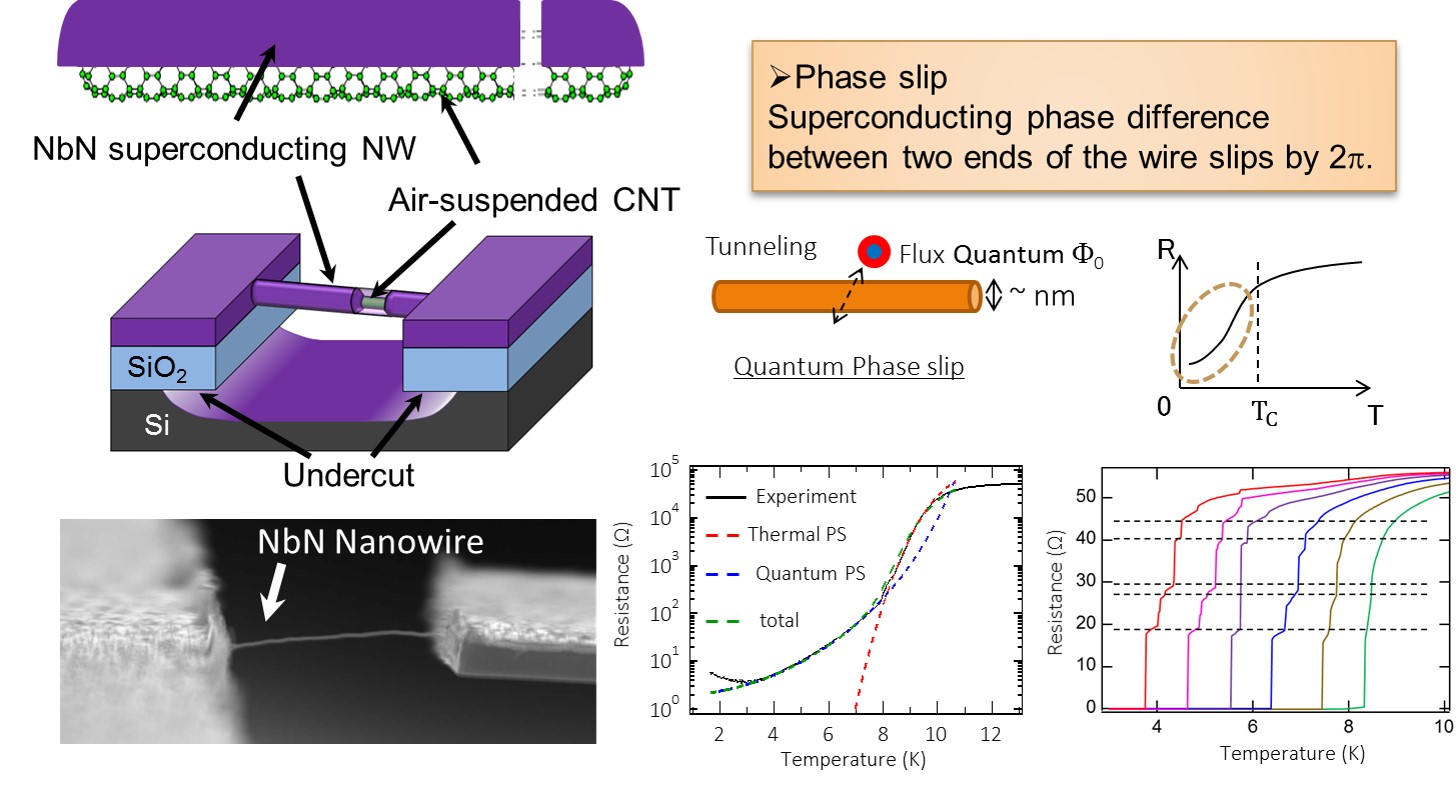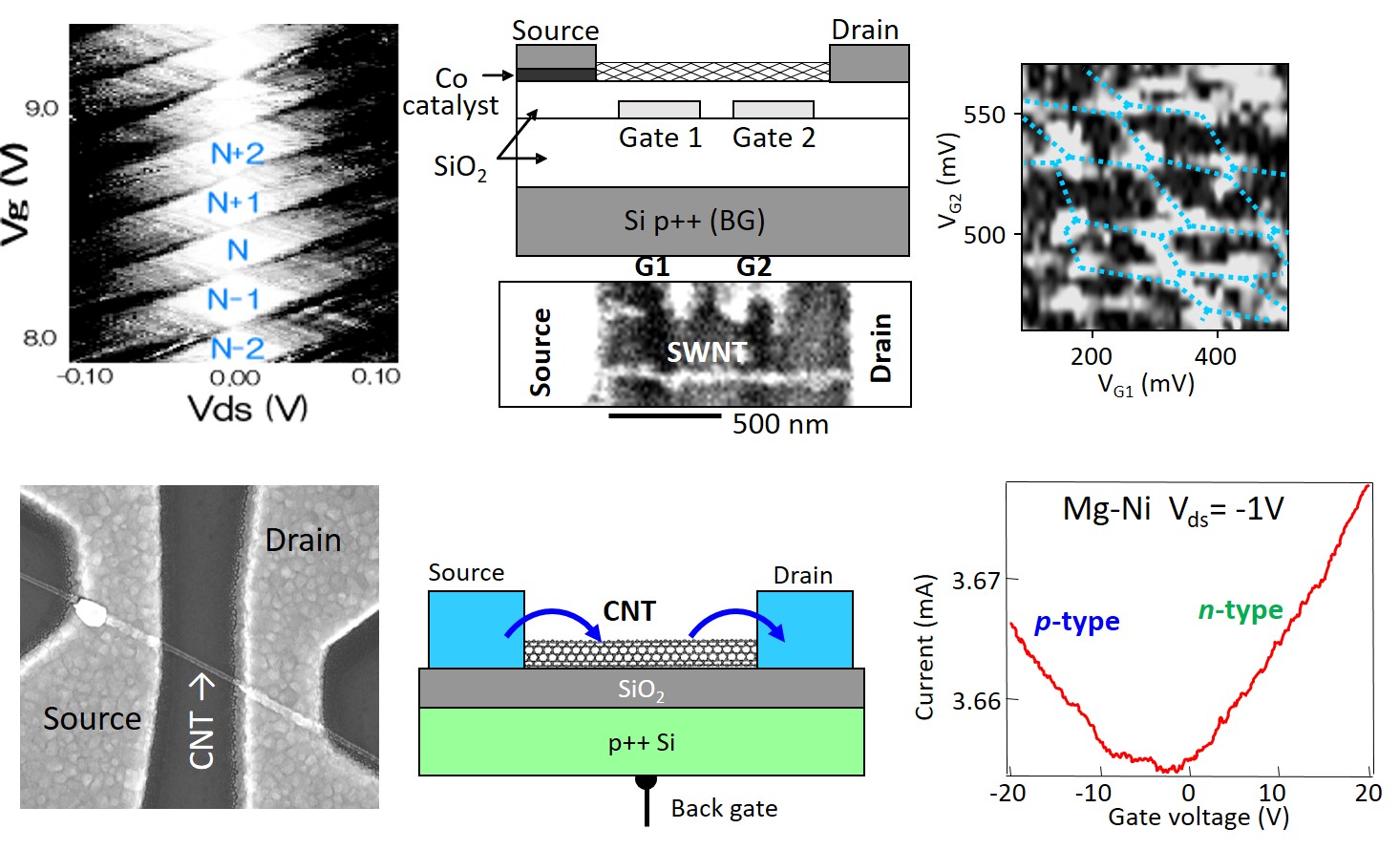Research
Back
Nanocarbon-based quantum electronic devices and transistors
Superconducting nanowire devices
Superconducting nanowires (NWs) have attention due to their quantum-mechanical properties, as well as their potential as next-generation quantum nanodevices, such as single-photon detectors, phase-slip (PS) qubits, and other hybrid structures. We studied one-dimensional (1D) superconductivity in nanowires fabricated by coating suspended carbon nanotubes with a superconducting thin niobium nitride (NbN) film. We observed the characteristics of 1D superconductivity with PS events and the crossover between thermal and quantum PSs as the temperature is lowered.
Publications
- “Thermal and Quantum Phase Slips in Niobium-Nitride Nanowires Based on Suspended Carbon Nanotubes”
K. Masuda, S. Moriyama, Y. Morita, K. Komatsu, T. Takagi, T. Hashimoto, N. Miki, T. Tanabe, and H. Maki, Appl. Phys. Lett. 108, 222601 (2016).

CNT-based quantum dot devices
CNT double-quantum dots
Field effect transistors
Carbon nanotubes are attractive materials for basic studies of quantum dot transport and applications of quantum dot devices. A SWNT behaves as a quantum dot with a large charging energy and energy splitting because of its small diameter, and exhibits single electron transport. These devices can be fabricated by using SWNTs with a length of several hundred nanometers; therefore, one SWNT can be gated by multi-local electrodes. We demonstrated single and double quantum dot devices. CNT devices also exhibit the properties of field effect transistors at room temperature. These properties can be tuned by the coupling and the work function of electrodes.
Publications
- “Electronic transport of a carbon nanotube quantum dot in different coupling regime”
Hideyuki Maki, Yoichi Ishiwata, Masaki Suzuki and Koji Ishibashi, Jpn. J. Appl. Phys., 44 (2005) 4269-4271.
- “Local change of carbon nanotube-metal contacts by current flow through electrodes”
Hideyuki Maki, Masaki Suzuki and Koji Ishibashi, Jpn. J. Appl. Phys., 43 (2004) 2027–2030.
- “Multi-Back-Gate Control of Carbon Nanotube Double-Quantum Dot”
Hideyuki Maki, Tomoyuki Mizuno, Satoru Suzuki, Tetsuya Sato, and Yoshihiro Kobayashi, Jpn. J. Appl. Phys., 48 (2009) 04C201.
- “Transport Characteristic Control of Field-Effect Transistors with Single-Walled Carbon Nanotube Films Using Electrode Metals with Low and High Work Functions”
Hideyuki Maki, Tetsuya Sato and Koji Ishibashi, Jpn. J. Appl. Phys., 45 (2006) 7234-7236..
- “Band Gap Narrowing and Electron Doping by Potassium Encapsulation into Single-Walled Carbon Nanotubes”
Hideyuki Maki, Satoru Suzuki, Tetsuya Sato and Koji Ishibashi, Jpn. J. Appl. Phys., 46 (2007) 2486–2489.

Back


